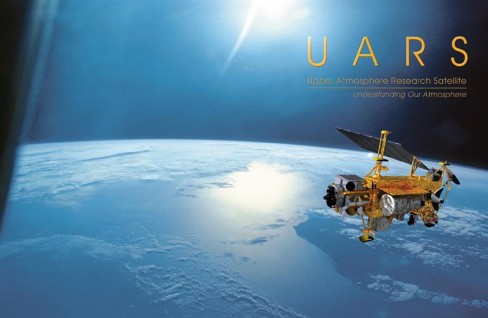NASA has warned that one of its defunct satellites will crash into the Earth’s atmosphere sometime over the next six weeks (between late September and early October) and rain debris over a wide area. But it doesn’t know where or when its Upper Atmosphere Research Satellite (UARS) will re-enter the atmosphere.
This means that NASA cannot yet predict where the remains of the satellite will fall.

The UARS satellite is 10 metres long (35 feet), 4.5 metres in diameter (15 feet), and weighs 5,896 kg (13,000 pounds). It was launched in 1991 to measure the chemical make-up of the upper atmosphere. Credit: NASA
In spite of this the space agency says that there is an “extremely small” safety risk to the public from the falling debris.
It is not unusual for satellites to be destroyed in this way; In 2001 Russia destroyed its Mir Space Station by setting it to fall into the atmosphere. Roscosmos was able to control Mir’s de-orbit so its debris fell into the South Pacific.
NASA does have some predictions for where the satellite debris will fall; somewhere between 57° North latitude and 57° South latitude, which pretty much means everywhere except the North and South poles. The debris will fall over an area 500 km wide.
NASA said that in the past 60 years no people have been injured from falling space debris, “Since the beginning of the Space Age in the late-1950s, there have been no confirmed reports of an injury resulting from re-entering space objects. Nor is there a record of significant property damage resulting from a satellite re-entry.”
However NASA does warn that if you do see some space debris fall (provided it doesn’t hit you) not to touch it and to call the police.
The warning comes a day after NASA released new high definition images of the Apollo Moon landing sites taken by its Lunar Reconnaissance Orbiter satellite.












